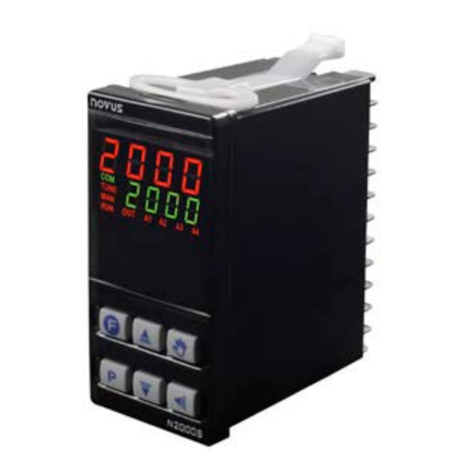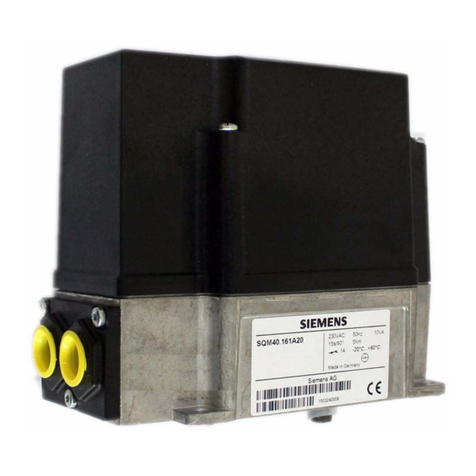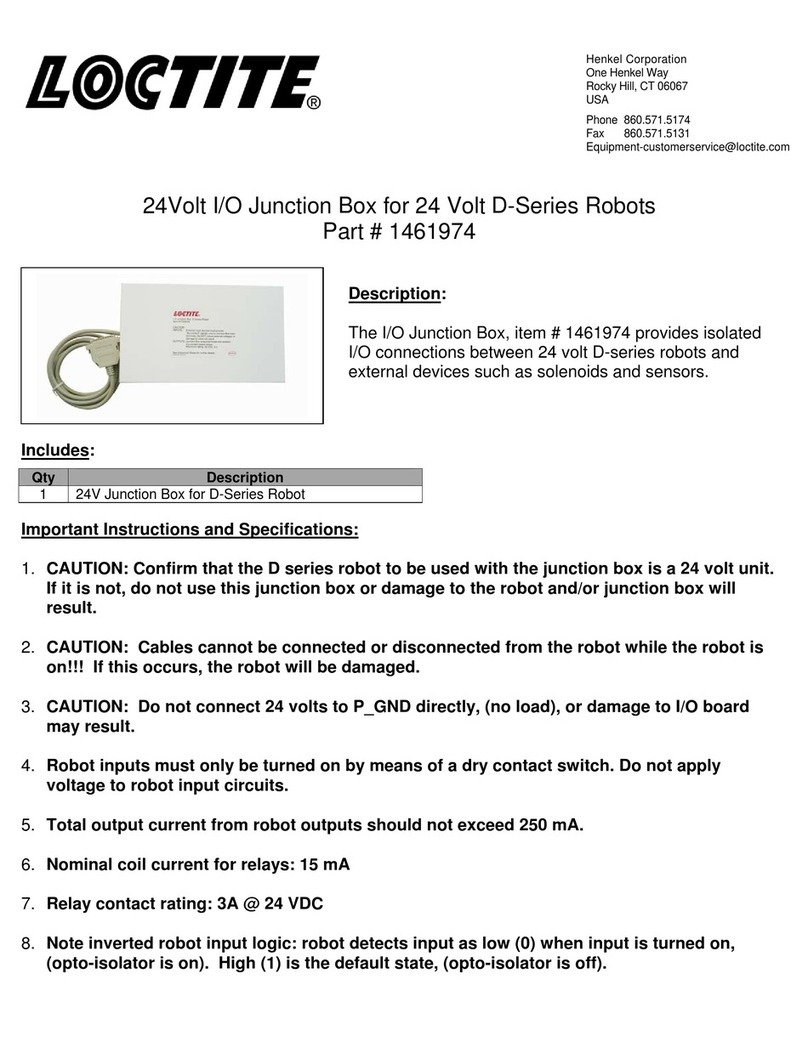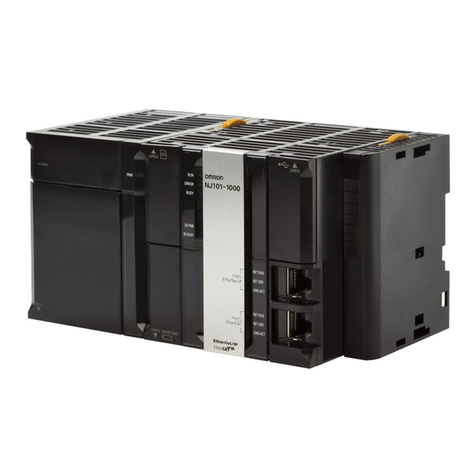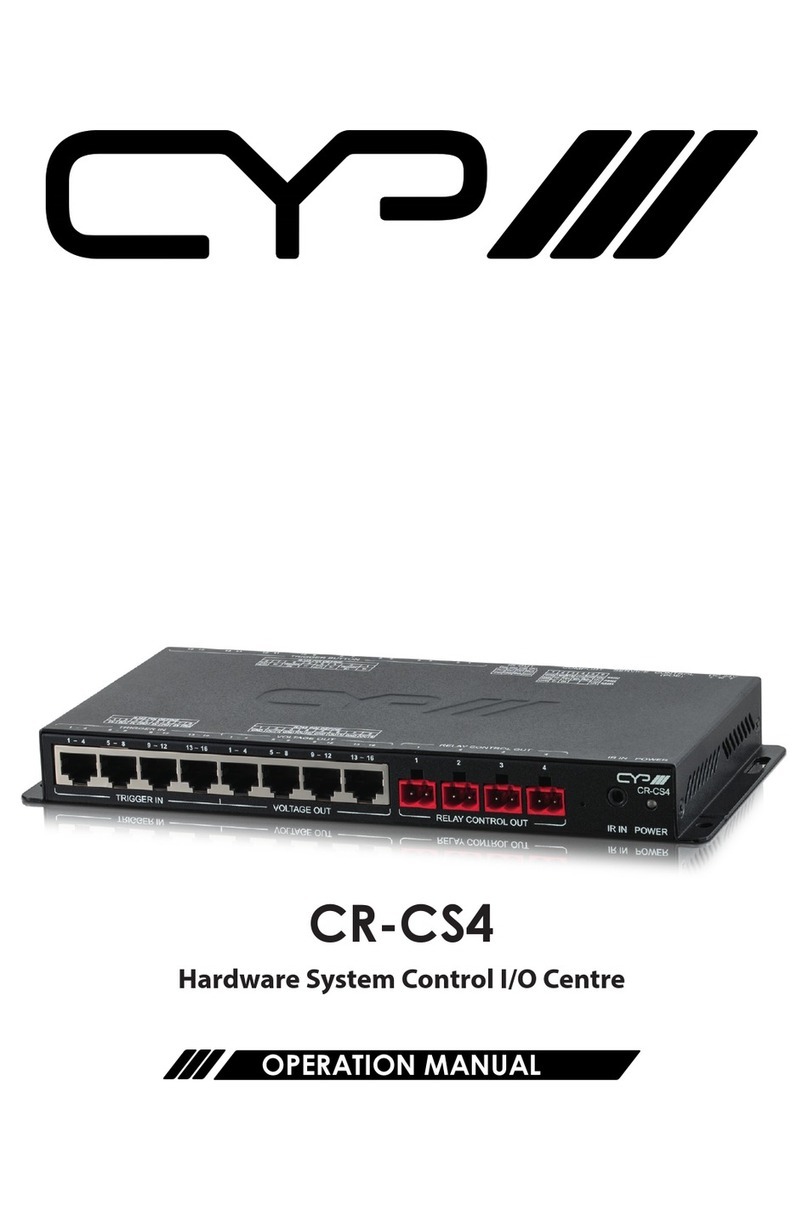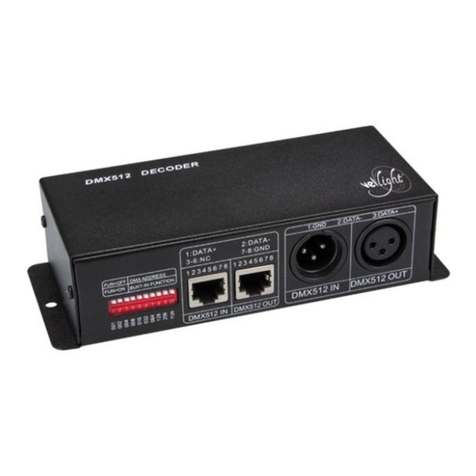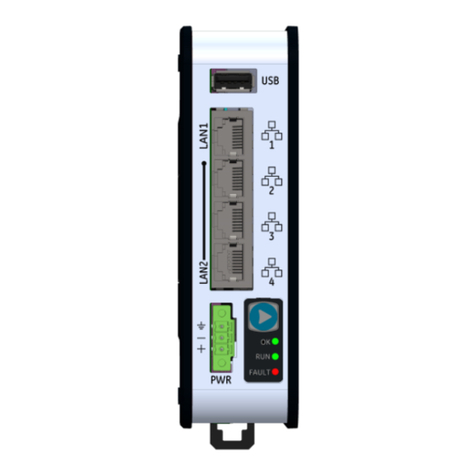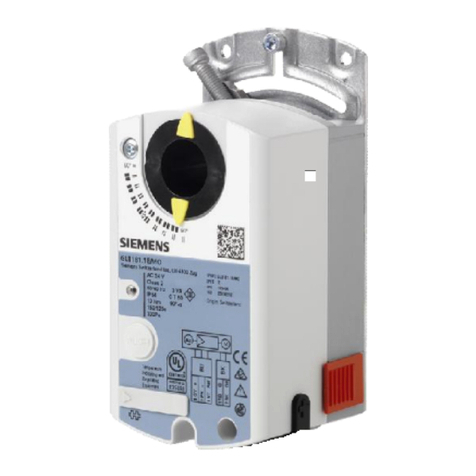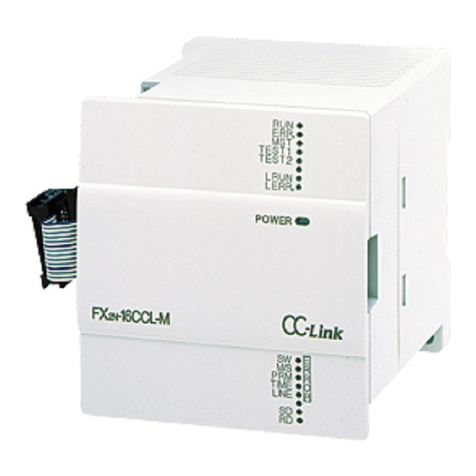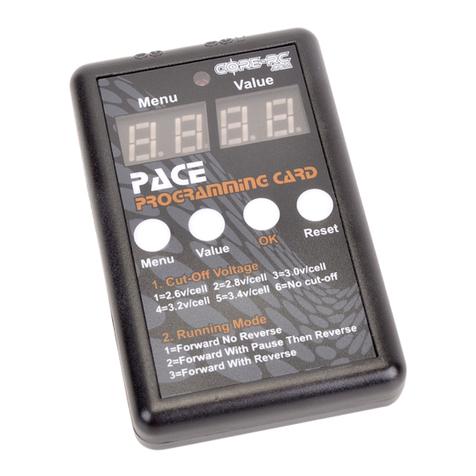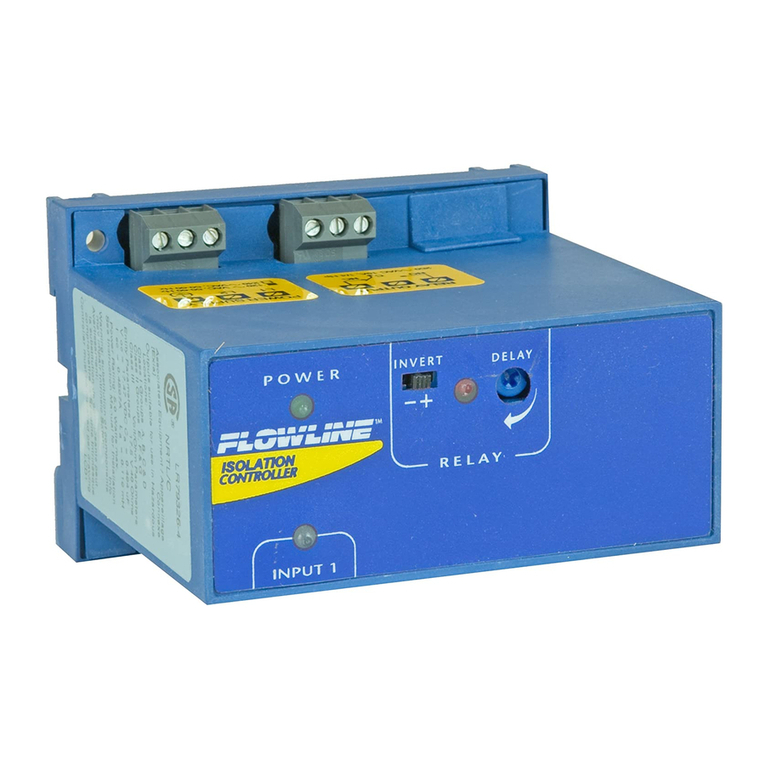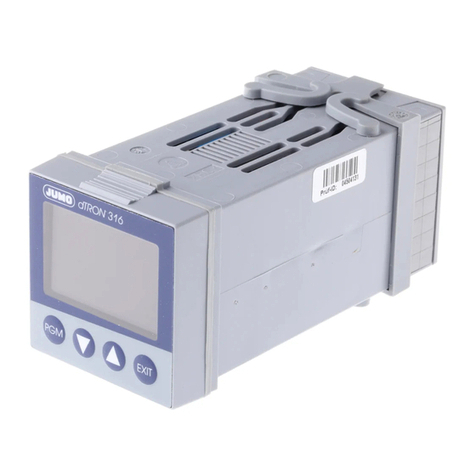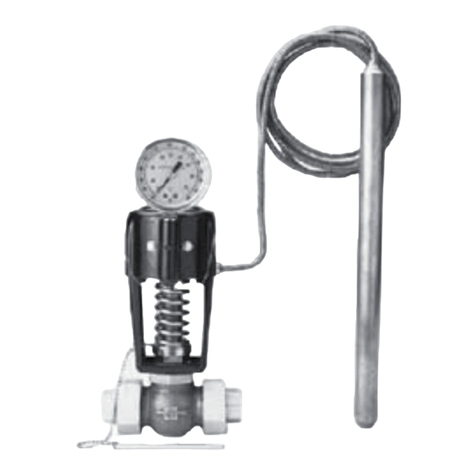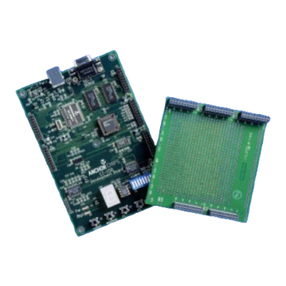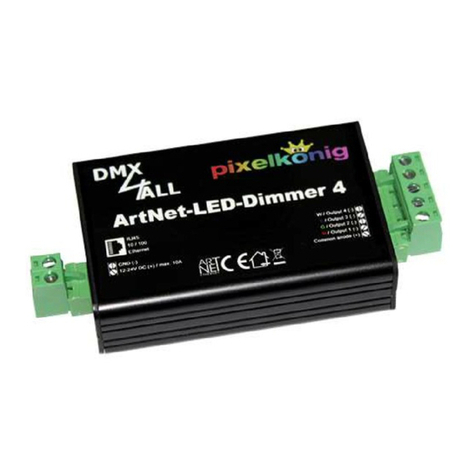Signal SDS Series User manual


SDS Series
2
Introduction
Thank you for purchasing a SIGNAL SDS Series irrigation controller.
The SIGNAL SDS Series is an Australian designed and manufactured irriga-
tion control system, designed for ease-of-use programming, while allowing
for the complex requirements of both landscape and agricultural applica-
tions.
The modular design of SDS Series controllers makes servicing possible for
the owner/operator - with easily accessible replacement plug-in electronic
modules.
The SDS-50 controller has a capacity to operate 48 solenoid valves from a
central location via two-wire or multi-wire installation. The SDS-100 in-
creases this number to 96. In the event of two-wire, 12 programmable
DataNodes™ facilitate the connection of sensors along the cable. An addi-
tional 6 controller direct inputs on the controller terminal. Up to two 24 di-
rect relay output modules can be connected at any location on the two-wire
cable for conventional 24VAC solenoid operation.
With SDS Series controllers, there’s no need for separate valve decoders.
Simply connect the cable direct to the SIGNAL DataCoil™.
Communication options include 3G/4G modem, WiFi and ethernet. These
enable remote programming and monitoring via SignalCloud Central Con-
trol Software (Web-based) or the SignalGo App for iPhone/iPad and An-
droid.
Made in Australia

SDS Series
3
Safety Information
The SDS Series of controllers are designed to operate on low voltage
36VDC. Use only the power supply included with the controller.
The power supply must be installed to comply with local electrical codes.
Prior to digging or trenching check with your local utilities for any under-
ground services.
Wear protective and insulated footwear when working with electrical
equipment.
SDS Series Controllers are packaged complete with the following items:
1 x SDS Series two-wire irrigation controller
1 x 36VDC switching power supply
1 x Pump-start DataNode (SDS-50: no. 49, SDS-100: no. 97)
1 x Surge Protector
1 x Set of plug-in alligator leads for two-wire device programming
1 x Instruction Book
1 x Only mounting template
Warranty Conditions – Signal Data Systems control equipment
Technical Irrigation Imports warrants to the first consumer purchaser from an authorised Dealer within
Australia that this product will be free from defects in materials and/or workmanship from the date of
purchase for a period of 12 months.
To exercise their rights under this Warranty as a purchaser, they must ship this product in secure and
appropriate packaging at their expense (insurance is recommended) together with proof of purchase to
Technical Irrigation Imports at 16 Mumford Place, Balcatta, Western Australia 6021.
Technical Irrigation Imports will repair or replace this product at its sole option at no charge to custom-
er for parts or labour in accordance with stated warranty terms, provided that Technical Irrigation Im-
ports or Service Agent is able to duplicate the defect or problem at its facilities.
This warranty does not apply to damage to this product that occurred as a result of incorrect installa-
tion, abuse or misuse, abnormal service or handling, thunderstorm activity, infestation by insects or
vermin, moisture ingression, damage which may have been caused either directly or indirectly by an-
other product, or if the product has been altered or modified in any way, or if the damage was caused
by repairs or service provided or attempted by anyone other than Technical Irrigation Imports or an
authorized Service Agent within Australia.
In no event shall Technical Irrigation Imports be liable for any indirect, incidental, collateral, exemplary,
punitive, consequential or special damages or losses arising out of your purchase of products and/or
out of this warranty, including without limitation, loss of use, profits, goodwill, loss or damage to land-
scape, fauna or crops, even if Technical Irrigation Imports has been advised of the possibility of such
damages or claims.
This Warranty does not limit any conditions, warranties, guarantees, rights and remedies implied by
relevant legislation in Australia, except to the extent permitted by such legislation.

SDS Series
4
Index
Introduction
Safety, packaging, distributors
Keypad, illustration
Controller, description, features
Inputs, terminal strip, illustration
LED fault indicators, circuit board layout
Enclosure, mounting instructions
Installation Guide, illustration
RelayCube Installation Guide, illustration
General Installation, instructions
Programming Introduction, default controller settings
Two-Wire Devices, introduction
Water meter Pulse Resolution, introduction
KWH Meter Resolution, introduction
Two-Wire Programming Port, introduction
Quick start programming
Menu Path of SDS Series
SDS Series Short-Cuts
Basic Time Based Program
Manual - start/stop program, start/stop stations
Manual - run valves
Raining-off, programs
Pausing, programs
Programming
Current time and Date
Basic Program
Days On/Off, Start Time, Station Run Time, programming
Loop Program
Frost Program
Frost Sensors, assigning to programs
Frost Watch, monitoring time-window
Frost Watch, enable, disable
Volumetric, program
Water Meters
Water Meter Pulse Ratio
Assigning Water Meters to DataNodes & Programs
Auxiliary Pump, function
Auxiliary Pump, pre-wet and run times
Auxiliary Pump, activate function
Master Pumps, adding additional and assigning to programs
Pausing, program
Raining-Off, program
Percentage, run time change
Clear Programs
2
3
7
7—8
9
10
11—13
14
15
16—17
18
19
19
19
20
21
22
23
23-24
24
24
24
25
25
25-26
26
27
27
28
28
28
29
29
29-30
30
30
30
31
31
31
32
32

SDS Series
5
Index
Manual Functions
Start Program, manually
Stop Program, while running
Pause Program
View Active Program
Start Stations, manually
Stop Active Stations
Information
Log, view
Log, delete
Faults, system
Water Meter Count, total
Water Meter Flow, active
Power Meter, total
Electrical Current Load
Water Level, percentage
Moisture Reading, percentage
Software, current version
System Settings
Water Meter Pulse, setup
Auxiliary Pump Activation
Precipitation, setup
Delay Time, introduction
Delay Times, pressure
Delay Times, water meter pulse
Delay Times, last station
Two-Wire Devices
Valves Online
Assign Valves to Stations
Run Valves, manually
DataValve/PumpNode Address, programming
Two-Wire DataNodes
Two-Wire DataNodes, configuring
Two-Wire DataNodes, configuring for moisture sensors
View DataNodes
Assign DataNodes to Moisture Sensor
Inputs
Pressure Sensor
Program Start Sensor
Pause Sensor
Rain-Off Sensor
Moisture Pre-Set, percentage
Set Station Flow
Flow Deviation
34
34
34
34
34
34
35
35
35
35
35
36
36
36
36
36
37
37
37
38
38
38
38
39
39
39
40
40
40
40
41
41
42
42
43
43
43
44
44

SDS Series
6
Leak Detection
Level Sensor, SDS-100 Only
Weather Stations, evapotranspiration
View Inputs
HydroSector Programming
HydroSector, introduction
HydroSector, flow chart
HydroSector, steps
Converting Programs to HydroSectors
Auto-Programming Feature
HydroSector, active days & accepting master start times
Factory Default Settings
Setting Controller to Factory Default
Fault Finding
Routine Things to Check First
Replacing Plug-In Modules
Current Draw, DataCoils
Fault Finding field Valves and Cable
Fault Finding Field Valves and Cable, illustration
Fault Finding Two-Wire Devices
Tracing the Source of a Short Circuit
Tracing the Source of a Short Circuit, illustration
Additional Fault Finding
Cable Size Guide
Cable Size Guide, graphs
Communication
3G/4G Modem
Wi-Fi Module
Entering Information via Keypad
Design reference
Valve/Station, notes
HydroSector, notes
44
44
45
45
46
46
47
47
48
48-49
49
50
50—51
52
52
53
54
54
55—56
57—58
59
60
60—61
61
62
63
Index

SDS Series
7
Description
• SDS-50: 48 Station/48 Valve capacity. Activates up to 4 valves
• SDS-100: 98 Station/98 Valve capacity. Activates up to 8 valves
• Operates up to four valves at once, plus master valve/pump, plus auxiliary
• DataCoil™ is a combined solenoid coil and two-wire decoder. Connects directly
to the two-wire cable.
• SDS Series can operate conventional (multiwire) solenoids using RelayCubes.
This can be done in conjunction with two-wire DataCoils when required.
RelayCube 1: Outputs 01—24
RelayCube 2: Outputs 25—48
RelayCube 3: Outputs 49—72
RelayCube 4: Outputs 73—98
CONTROLLER DESCRIPTION — FEATURES:

SDS Series
8
• 8 Independent programs with flexible pump assignment
• 12 Programmable field DataNodes™ connect directly to the two-wire cable
• Moisture sensors (up to 4 total)
• Water meters ( up to 8)
• Pause program
• Stop program
• Rain off
• KWH meter (1 only)
• Frost sensors (2 only)
• 7 Direct controller sensor inputs connect to the controller terminal strip
• Analog pressure sensor — High, intermediate and low. Set points and
delays are programmable at controller.
• Tank Level (Requires SDS-100 w/ Ultrasonic Level Sensor)
• Digital water meter
• Low pressure
• Intermediate pressure (skips to next station in program sequence)
• High pressure
• Program start
• Aux Meter
• Programs watering in time, volume (litres) and precipitation (mm).
• Exclusive HydroSector™ for matched precipitation zones.
• Loop program for propagation.
• Run times in Hr : min : secs.
• DataValves™ can be assigned to any station.
• DataNodes™ can be assigned to any program.
• PumpNodes connect anywhere on the two-wire cable to pump-start re-
lays.
• Auxiliary pump for chemical/fertigation program.
• Individual pumps can be assigned for each program.
• 2 independent Frost programs
• Connect online via cellular data (3G / 4G modem req.), Wi-Fi (module
req.) or Ethernet (module req.).
• SignalCloud central control software accessible from
www.signalcloud.com & dedicated tablet app.
• SignalCloud Mobile Smartphone/Tablet App available for download on
Apple’s App Store and Google Play for Android.
Description
• Flexible setup
• Online connectivity

SDS Series
9
Description
0.25 Hz max
0.25 Hz max

SDS Series
10
Circuit board LED indicators
Led 1 = Power OK at Motherboard
Led 2 = Power OK at Micro Controller Board
Led 3 = (Flashes) = Micro Controller is OK
Led 4 = Power OK at Output Board
Led 5/6 = Two-Wire Power Output is ON
CHECKING CIRCUITRY FOR FAULTS:

SDS Series
11
Description
SDS SERIES ENCLOSURE & MOUNTING:

SDS Series
12
Enclosure
Front lid hinges up 90° and 180°
Clear view window
Easily accessible
terminal strip
Dimensions:
179H x 199W x 106.5D

SDS Series
13
Enclosure
• Screw down at bottom
(NEW) CLIP-ON FRONT PANEL
• Push down to secure
• Pull up to remove

SDS Series
14
INSTALLATION GUIDE:
Installation

SDS Series
15
The SD-DR-1 relay module
(RelayCube) can be connected
anywhere along the two-wire
cable network. A separate 24
volt AC power supply is re-
quired to provide power to
standard 24VAC solenoid coils.
Relay module SD-DR-1 has a
capacity of 1-24 outputs.
A fuse is fitted for field short
circuit protection.
Two-wire DataValves and
direct wired solenoid
valves can operate simul-
taneously.
To field two-wire devices
Installation

SDS Series
16
WIRING CONNECTIONS TO CONTROLLER:
• Install the controller’s VDC power supply in close proximity to the controller.
• The controller is supplied with quick disconnect terminal strips. It may be conven-
ient to unplug the terminal strips to terminate the wiring, they can then be
plugged back into their headers on the PCB motherboard.
• Connect the 36VDC RED / BLACK power leads to the R and B terminals at the con-
troller.
• Sensor cables should be not greater than .2mm² (AWG24) when directly wiring
into the controller terminal strip. The Two-wire terminals [O/P] are connected to
the SD-SP filter/protection device. See next section Lightning Protection
• Connect the PumpNode™ RED wires to the two-wire cable, BROWN wires to the
pump start relay. Ensure the pump start relay is a low current rated device at
maximum 24VAC 65mA (Omron LY 24VAC series)
• When installing a direct relay module SD-1-DR (RelayCube) it will require a sepa-
rate 24VAC power supply. Please ensure this is rated a minimum of 1 amp.
• The RelayCube™ can be mounted anywhere that is convenient along the two-wire
cable provided a 24VAC power source is available.
• Do not earth the 24 VAC at the RelayCube™. See page 15.
OPERATIONAL AND ENVIRONMENTAL REQUIREMENTS:
• Ambient operating Temperature 0 to 55 degrees centigrade maximum.
• Main supply voltage for controller power supply 100—240 VAC 50/60Hz
• Ensure adequate air ventilation to assist cooling if installed in cubicle.
• Power supply must be installed by a qualified electrical technician.
• Use only the power supply supplied with the controller or a recommended alterna-
tive by Signal Data Systems.
• Position the controller away from direct sunlight and water spray.
• Avoid close proximity to possible electromagnetic interference and particularly
close proximity to VSD devices unless they meet all the manufactures installation
requirements. Signal Data Systems recommend a distance of 5 meters from
possible sources of electromagnetic interference.
MOUNTING CONTROLLER:
• Locate at an easy viewable eye level with a minimum top clearance of 200mm
for lid to be fully opened.
• Allow sufficient space at the bottom of the controller for conduits and cable.
• Some installations may require a separate terminal strip mounted in close proximi-
ty to the controller if large gauge two-wire cable is used.
• Mount the controller using all four mounting points on a flat level surface.
Installation

SDS Series
17
Installation
TWO-WIRE CABLE REQUIREMENTS:
• Signal twisted pair cable with tinned copper conductors certified for direct burial
is recommended for optimum performance.
• Signal recommends all two-wire cable joints should be soldered in a professional
manner for maximum reliability. If not soldered, they must be tightly twisted to-
gether for a minimum distance of 30mm then clinched over. It is the installers
responsibility to provide low resistance water tight cable joints.
• Waterproof connectors must be certified for below ground use. Direct bury con-
nectors are not suitable for permanent submersion in water unless specifically
rated. Long periods of full emersion will cause connector failure.
• Great care should be taken to ensure the cable insulation is not compromised, i.e.
nicks in the inner cable insulation etc. It is the installers responsibility to en-
sure there is no electrical leakage to earth in the cable network.
• Ensure the two-wire cable is well distanced from high voltage cables. If the cable
crosses a high voltage line it must be at right angles with a minimum clearance of
600mm.
• Never install the two-wire cable in the same conduit or strapped to any electrical
high voltage cable.
LIGHTNING PROTECTION:
• For lightning protection to be effective the energy of the strike needs to be in-
stantly gated to earth.
• Connect the ORANGE wires from the SD-SP surge arrester to the O/P terminals at
the controller.
• For best results flat braided cable is used to connect to an earth stake of at least 2
metre length with a resistance to earth of 10 Ohms or less. Locate the SD-SP as
close as possible to the earthing stake.
• For additional protection, install SD-SA filter/arrestors every 300 meters or every
16 valves. Connect to an earth stake with a resistance of 10 Ohms or less to
earth.
Note: A 10 Ohm or less resistance to earth can be difficult to achieve in sandy soils. To re-
duce the damaging effects of lightning follow these three rules:
1. Ensure that no bare cable conductors are in contact with the soil.
2. Use only approved direct bury cable connectors and be careful not to nick the in-
ner cable insulation and thus exposing bare copper conductors.
3. Do not direct bury. Make sure that the DataNodes™ and DataValves™ are installed
in well drained valve boxes and are not subject to flooding or prolonged emersion
in water.
Note: Australian Standards for Lightning protection to be effective is 10 Ohms or less re-
sistance to earth.

SDS Series
18
Programming intro.
When the controller is not in use the display backlight and power to the two-wire cable
shuts down after 3 minutes. When pressing a key the backlight and power to the two-wire
cable will activate.
Use the Back key at any time to return to previous entry or keep pressing to return to the
current Time and Date display
The Setting basic program at the beginning of this guide uses default factory settings for
master valve/pump, program mode and time/volume option.
The menu system is designed to make programming simple and intuitive. The controller is
capable of basic programs or complex programs by entering further into the menus.
The key pad is a soft touch design with a audible beep to confirm contact. If a key is held
down it will fast repeat. This is most helpful in the Scroll and Back keys.
The controller programs status can be viewed at anytime by pressing the “0” key:
A= Programmed
P= Program in Pause
F= Frost program enabled
f= frost program disabled
R= Program in Rain off
Controller default settings are:
No station run times
All days on
Water meter 1 assigned to all programs
No loop cycle
Master valve/pump address 49, Auxiliary
pump address 50.
No start times
Time mode (not volumetric)
% set at 100%
No station delay
Manual Stn 01—48
No manual Stn time
No manual Stn pump selected
Valves assigned to corresponding stn numbers.
All DataNodes™ nil input and un-assigned
Analog pressure sensor, no settings
Pressure sensor at controller Digital inputs
Pressure sensor delay, LP 02min SP 03sec HP02sec
Moisture pre-set at 75
Pause sensor– no programs
Rain off sensor—no programs
Program start sensor– program 8.
Water meter pulse– 1 pulse = 1 litre
Precipitation all HydroSectors™ - 12mm
No HydroSectors™ selected
Frost watch disabled
PROGRAMMING INTRODUCTION:

SDS Series
19
* The analog output of the moisture
sensors are calibrated. The set-points
can be programmed at the controller.
Programming intro.
The SDS-50 controller has a two-wire output that supplies electrical power and a communica-
tion protocol to operate up to 48 DataValves™ and up to 12 DataNodes™. In addition it is
supplied with a pump start PumpNode™. The default address for this device is set at 49. The
controller can operate an auxiliary pump which is typically used for chemical or fertiliser dos-
ing. The default address for this is 50. If more pumps are in use they should be programmed
at a lower number.
TWO-WIRE DEVICES:
DataNodes™ have 12 addresses and are numbered as such (1-12) in the TWO-WIRE menu.
Three variations of DataNodes™ are used. There inputs are: N/O contact (SW), Counter
(CN), Moisture (AN). DataNodes™ can have the following functions assigned to them at the
controller:
Moisture * (AN)
Pause (SW)
Rain on/off (SW)
Stop program (SW)
Water Meter (CN)
KWH meter (CN)
Frost (SW)
After the functions have been assigned they are connected to the programming port.
The menu prompts for the TW-device number. After it is selected and entered the settings are
downloaded to it. Caution: Once disconnected from the port the setting is permanent.
Moisture sensors are programmed in the same manner.
Pause sensors, N/O contact input. When activated (closed contact) the program/s the sen-
sor is assigned to will suspend irrigation until the sensor de-activates, then resume again.
Rain on/off, N/O contact input, stops irrigation until next start time.
Stop program sensor, N/O contact will stop active program/s that have been activated by
the Start Program sensor input at the controller.
Water meters are assigned to programs, pulse resolutions supported are 1 X 1L, 1 X 10L, 1
X 100L and 1 X 1000L. Maximum pulse rate is 1 pulse every 4 seconds.
KHW resolution is 1 x 1KWH
Frost Sensor (1) & (2) two programs are available for frost. Sensor (1) will activate pro-
gram 7 and sensor (2) will activate program 8.
DataValves™ are programmed by entering its number (address) at the controller. After the
address is selected it is then connected to the programming port and downloaded.
PumpNodes have a 2.9 VDC output, they activate 24VAC pump-start relays (65mA max’)
and are optimised for Omron LY 24VAC series relays. The address number at each of the 8
programs is set at default 49 for Master pump and 50 for Auxiliary pump. In the program
menu an option is displayed for the pump address which can be selected to a different num-
ber and therefore have different pumps per program. After a number (address) is selected
the TW-Device (PumpNode) is then connected to the programming port for downloading of its
setting.

SDS Series
20
Programming intro.
CONTROLLER TWO-WIRE PROGRAMMING PORT:
(All two-wire devices configuration are programmed from this port, or the optional hand-held
programmer)
*
DataCoil wire colour may vary
depending on model.
*
This manual suits for next models
2
Table of contents
